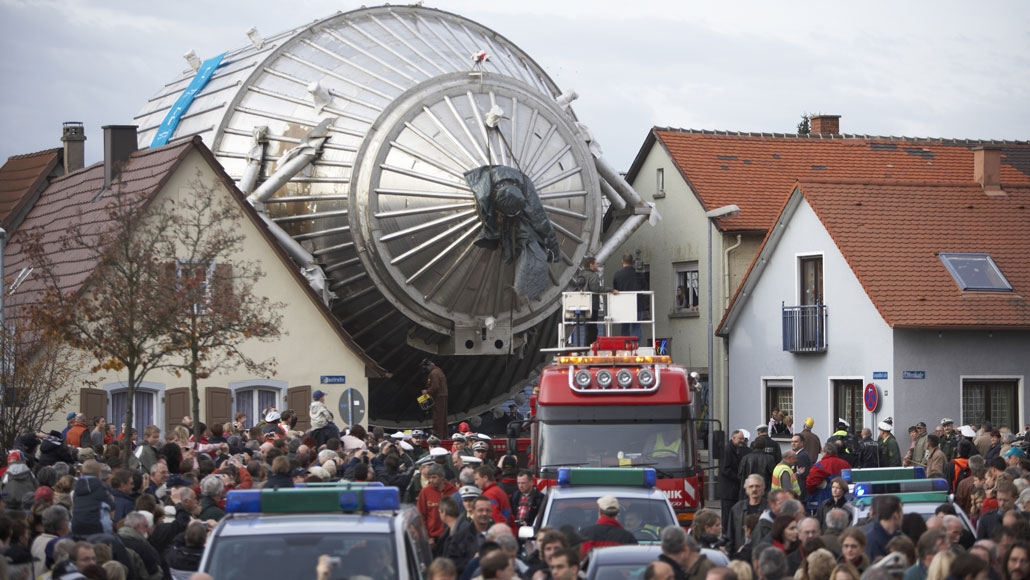
The KATRIN experiment has better pinned down a cap on the mass of neutrinos, using a huge device called a spectrometer (shown in this 2006 photo in the German town of Eggenstein-Leopoldshafen on its way to a lab in Karlsruhe).
Karlsruhe Institute of Technology